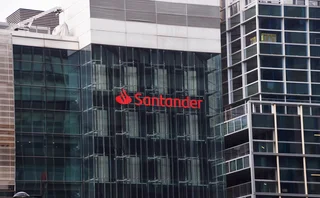
Risk scenarios must take impact of climate change into account
More attention needs to be paid to whether risk scenarios allow for environmental factors and market volatility, says Algorithmics
TORONTO/LONDON/NEW YORK – This year has seen a spate of environmental events, from the devastation caused by the California forest fires to severe flooding in northern Europe and Asia. This, combined with the near shutdown of the wholesale lending sector, highlights the need to reassess the robustness of existing risk scenarios, says risk management software provider Algorithmics in its monthly FIRST newsletter.
“We have identified what we consider to be key risks affecting our working environment and have provided excerpts from cases in the FIRST database to demonstrate how large their direct and indirect impact can be,” says Penny Cagan, a managing director at Algorithmics. “We have chosen cases that have unusual characteristics that might not be considered during the process of imagining what could go wrong.”
One case Algos looked at was the damage caused by the recent fires in southern California. The Insurance Information Institute estimates the cost to home and businesses at half a billion dollars in insurable losses. The cost to San Diego county is another $1 billion. Algos warns that businesses that could be affected by similar environmental disasters should be working to develop scenarios to account for employees losing their homes and being unable get to work. Terrorist attacks can have a similar effect, and need to be considered in scenario planning.
Algorithmics also points towards the risks of shifts in global economic power. The increasing influence of emerging economies such as India and China is changing how companies conduct business in those countries, and this might require an associated shift in risk scenarios that account for overseas activities. For instance, risk profiles should consider the possibility that the government of China could pull away from capitalism and seize foreign assets.
“It is not too difficult to imagine a pulling back from the government in China one day and risk scenarios should at least include this possibility,” says Penny Cagan. “This was witnessed in Russia when the government pulled back oil company assets that it had previously privatised, saying it was making amends for flawed privatisations that had occurred in the early 1990s.”
Only users who have a paid subscription or are part of a corporate subscription are able to print or copy content.
To access these options, along with all other subscription benefits, please contact info@risk.net or view our subscription options here: http://subscriptions.risk.net/subscribe
You are currently unable to print this content. Please contact info@risk.net to find out more.
You are currently unable to copy this content. Please contact info@risk.net to find out more.
Copyright Infopro Digital Limited. All rights reserved.
As outlined in our terms and conditions, https://www.infopro-digital.com/terms-and-conditions/subscriptions/ (point 2.4), printing is limited to a single copy.
If you would like to purchase additional rights please email info@risk.net
Copyright Infopro Digital Limited. All rights reserved.
You may share this content using our article tools. As outlined in our terms and conditions, https://www.infopro-digital.com/terms-and-conditions/subscriptions/ (clause 2.4), an Authorised User may only make one copy of the materials for their own personal use. You must also comply with the restrictions in clause 2.5.
If you would like to purchase additional rights please email info@risk.net
More on Risk management
Clearing members ponder the purpose of CME’s mystery FCM
Some think licence will be used to boost crypto clearing capacity, but many questions remain
Review of 2024: as markets took a breather, firms switched focus
In the absence of major crises and rules deadlines, financial firms revamped strategy, services and practices
As supplier risk grows, banks check their third-party guest lists
Dora forces rethink of KRI and appetite frameworks amid reappraisal of what constitutes a key counterparty
Dora flood pitches banks against vendors
Firms ask vendors for late addendums sometimes unrelated to resiliency, requiring renegotiation
Quant Finance Master’s Guide 2025
Risk.net’s guide to the world’s leading quant master’s programmes, with the top 25 schools ranked
Regionals built first-line defences pre-CrowdStrike
In-business risk teams vary in size and reporting lines, but outage fears are a constant
Op risk data: Santander in car crash of motor-finance fail
Also: Macquarie fined for fake metals trade flaws, Metro makes AML misses, and Invesco red-faced over greenwashing. Data by ORX News
Public enemy number one: the threat to information security
Nearly half of domestic and regional banks report risk appetite breaches amid heightened sense of insecurity







